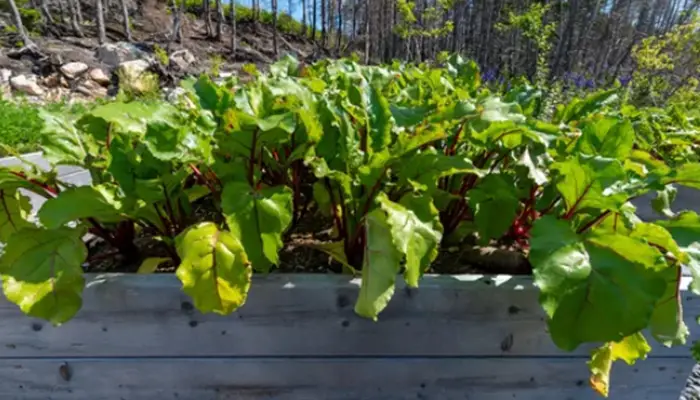Growing beets in a container are quite easy and fun at the same time. If you are considering growing your own beet vegetable, we have so some easy tips to follow.
Beets are some of the most common vegetables gardeners plant all year round.
They are also great to grow in containers, as they are small and compact, and can be grown in a variety of different sizes of containers.
Beets are also relatively easy to grow and can be harvested throughout their growing season.
Here are a few resources you will need to get started when growing your own beet vegetables.
Choosing the Right Container

The first step in growing beets in containers is to choose the right container.
Beets can be grown in a variety of different container sizes, from small pots to large barrels.
However, the key is to choose a large container to accommodate the beet plants’ roots.
A good rule of thumb is to choose a container that is at least 12 inches deep and 12 inches wide.
This size is ideal and will provide enough space for the roots of the beet plants to grow and expand.
If you are growing multiple beet plants in the same container, you will need to choose a container that is at least 24 inches deep and 24 inches wide.
Preparing the Soil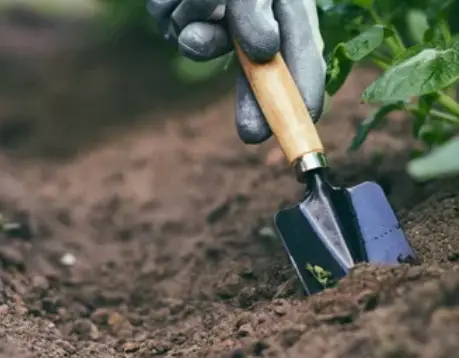
Once you have chosen the correct container for your beet plants, you will need to prepare the soil.
Beets prefer well-drained soil that is rich in organic matter.
You can purchase a commercial potting soil mix or make your own by mixing together equal parts of peat moss, perlite, and vermiculite.
Also, be sure to mix in a slow-release fertilizer, such as a 14-14-14 or a 10-10-10, according to the package instructions.
This will provide your beet plants with the nutrients they need to grow and thrive.
Planting the Beets
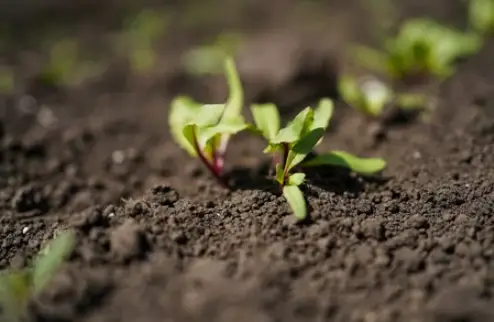
Once the soil is prepared, it’s time to plant the beets. Beets can be planted either from seed or from seedlings.
If you are planting from seed, you will need to sow the seeds directly into the soil.
Also, If you are planting seedlings, you will need to transplant them into the container.
Remember, when planting the beets, be sure to space them about 3 inches apart.
This will give the plants enough room to grow and expand without overcrowding.
Cover the seed or seedlings with soil, and then water them well.
Caring for the Beets
Once the beet vegetables are planted, you will need to care for them to ensure they grow and thrive.
Beets prefer full sun, so be sure to place the container in a location where it will receive at least 6 hours of direct sunlight per day.
Beets also require regular watering too, I learned this the hard way.
Also, keep the soil consistently moist but not waterlogged.
A good rule of thumb is to water the beets once a day, or more often if the weather is hot and dry.
Beets also require regular fertilization as well.
During the growing season, be sure to fertilize the beets every 2-3 weeks with a liquid fertilizer or a slow-release fertilizer.
Harvesting the Beets
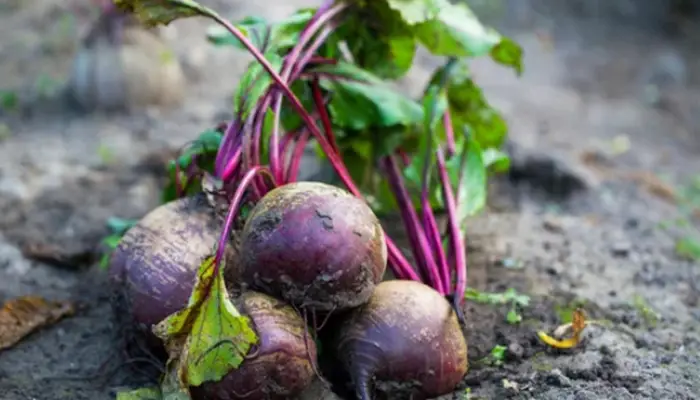
Beets are usually ready to harvest when they are about 2-3 inches in diameter.
To reap the beets, simply pull them up by the greens. That’s it.
Also, be sure to leave about 2 inches of stem attached to the beet, as this will help to prevent the beet from rotting.
Beets can be stored in a cool, dry place for up to a month. They can also be pickled or canned for longer storage and harvested throughout the growing season.
With proper care and attention, you can enjoy fresh, delicious beets right from your own container garden.
Growing Beets in Containers: Companion Planting
Companion planting is the practice of planting different types of plants together that have a symbiotic relationship.
This can include plants that repel pests, attract beneficial insects, or have other beneficial effects on each other.
When it comes to growing beets in containers, there are a number of plants that make great companions. Some of the best companion plants for beets include:
Lettuce
Lettuce and beets grow well together and can be planted in the same container.
Lettuce provides shade for the beetroots, which helps to keep them cool and moist.
Radishes
Radishes are another great companion plant for beets. They grow quickly and can be harvested before the beets are ready. This helps to keep the container from becoming overcrowded.
Onions
Onions are known to repel pests and diseases, making them a great companion plant for beets. They also help to improve the flavor of the beets.
Nasturtiums
Nasturtiums are known to repel aphids and other pests, making them a great companion plant for beets. They also add a pop of color to the container.
Pest and Disease Control
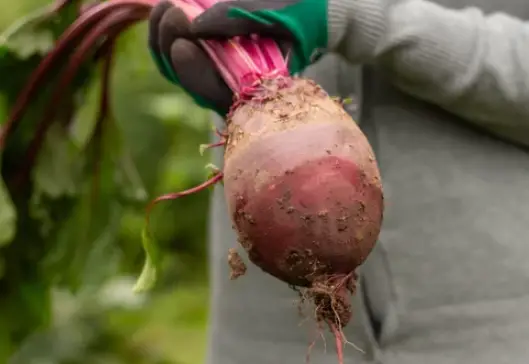
Like all plants, beets can be affected by many pests and diseases.
Some of the most common pests and diseases that affect beets include aphids, flea beetles, and curly top viruses.
To prevent pests and diseases from affecting your beet vegetable, it’s important to keep the container clean and free of debris.
Always try to regularly inspect the plants for signs of infestation and take action as soon as you notice any issues.
If you do notice pests or diseases affecting your beets, there are a number of organic and natural methods that you can use to control them.
Some of these include:
Neem oil
Neem oil is a natural pesticide that is effective against a wide range of pests. It can be applied directly to plants to control pests such as aphids and flea beetles.
Diatomaceous earth
Diatomaceous earth is a natural pest control method that is made from the fossilized remains of tiny marine organisms. It can be applied to the soil to control pests such as slugs and snails.
Companion planting
As mentioned earlier, companion planting can be a great way to control pests and diseases. By planting companion plants that repel pests or attract beneficial insects, you can help to keep your beets healthy and pest-free.
Do beets grow better in sun or shade?
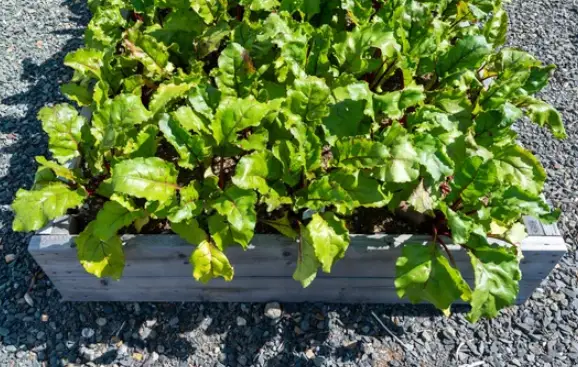
Beets prefer full sun, at least 6 hours of direct sunlight per day.
They will grow well in a location that receives full sun, but they can also tolerate partial shade.
Beets will grow in shaded areas, but the leaves will be thinner and the beetroot will be smaller.
If you live in a hot area, it’s important to provide some shade during the hottest part of the day to protect the leaves from sun scorch.
How long do beets take to grow?
The time it takes for beets to grow can vary depending on the variety and growing conditions. On average, beets take around (50 to 70 days) to reach maturity.
The baby beet varieties can be harvested as soon as they reach golf ball size, which is around 35-40 days after sowing.
For mature beets, they can take around 60-70 days to reach maturity. This time frame can also be affected by the temperature and weather conditions, as well as the amount of sun and water the plants receive.
It’s always a good idea to check the seed packet or seedling label for the specific time to maturity of the variety you have chosen to grow.
Will beets grow in potting soil?
Beet vegetables can indeed grow in potting soil. Potting soil is a type of soil mix that is specifically formulated for container gardening.
It is well-draining and lightweight, which makes it ideal for growing beets in containers.
When using potting soil, it’s important to ensure that the mix contains sufficient organic matter and nutrients to support the growth of the beets.
You can also add slow-release fertilizer or compost to the soil to provide the beets with the necessary nutrients to grow.
Beets also prefer well-drained soil, so it’s important to make sure that the potting soil you use is well-draining and doesn’t retain too much water.
If you’re not sure about the quality of the potting soil, you can add perlite, vermiculite or coarse sand to improve drainage and aeration.
Overall, potting soil is a great option for growing beets in containers as long as it’s well-draining and contains enough organic matter and nutrients.
Conclusion
Growing beets in containers is a great way to enjoy fresh, delicious beets right from your own garden.
With the right container, soil, and care, you can easily grow beets in a container.
And by incorporating companion planting, and pest and disease control, you can ensure a bountiful harvest.
Beets are a great addition to any container garden and can be enjoyed in a variety of different dishes.
So, give it a try and enjoy the taste of fresh beets.

